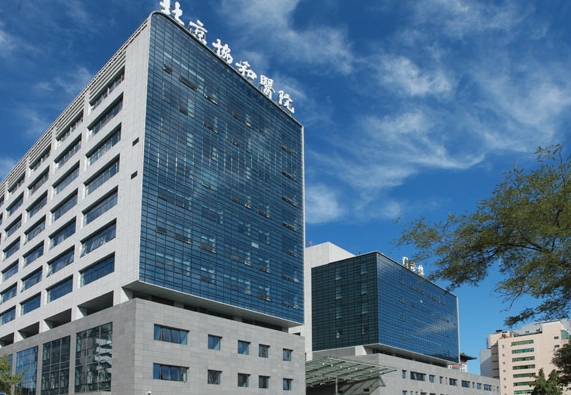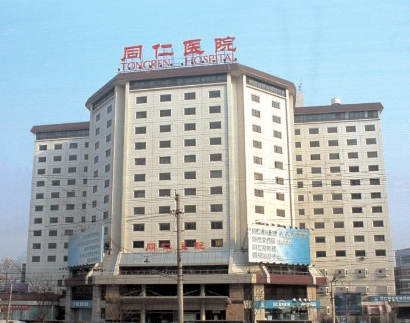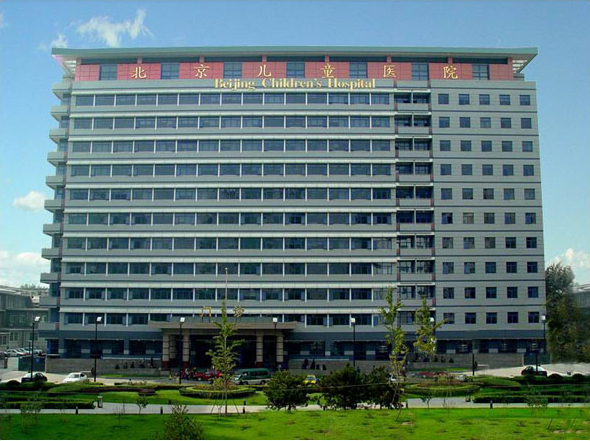面肌痉挛
Hemifacial spasm (HFS,also called tic convulsif) is an involuntary twitching of the facial muscles on one side of the face. The facial muscles are controlled by the facial nerve (seventh cranial nerve), which originates at the brainstem and exits the skull below the ear . The facial nerve is primarily a motor nerve, meaning it controls muscles that move the eyebrows, close the eyes, and move the mouth and lips. Hemifacial spasm is rare, affecting only 8 people in 100,000 in the US. The average age of onset is 45 years and occurs slightly more in women,male/female is 2/3.复旦大学附属华山医院神经外科张法永
面肌痉挛,又称面肌抽搐。为一种单侧面部不自主抽搐的病症。面部肌肉是由面神经控制的,该神经由脑干发出,经内听道下方出颅.面神经主要为运动型神经,控制眼睑、口腔和嘴唇的活动。面肌痉挛比较少见,在美国,每100000中有8例患者,女性多见,男、女比例约2:3。平均年龄为45岁。
Symptoms
In 92% of cases, the spasm starts near the eye and progresses down the face over time. The early symptom is usually an intermittent tic of the eyelid muscle, which may eventually lead to complete closure of the eye. In the other 8% it starts near the chin and progresses upward. The twitching is usually not painful, but it can be embarrassing and interfere with normal expression and vision. The spasm may then spread and eventually involve all of the muscles in the affected side of the face and the spasms may be limited to the upper or lower half only, and excess tearing may occur. Symptoms may be present during sleep.
症状
90%的患者起病从眼轮匝肌开始抽搐,然后向下逐渐涉及整个面。早期症状眼睑肌肉的间断抽搐,可导致眼睛关闭。10%的患者从下巴开始,向上进展。常不伴疼痛,但导致患者窘迫和影响患者的正常表情和形象。痉挛可扩散到一侧脸部,也可能局限在上部或下部。可能出现流泪现象。睡着时症状也可出现。
Diagnosis
Medical history and a neurological exam usually can lead a doctor to diagnose HFS. An MRI scan may rule out other conditions such as a brain tumor, aneurysm, or AVM that may be causing facial nerve compression. An electromyogram (EMG) study of the face is often done along with a nerve conduction velocity (NCV) study to measure facial muscle and nerve electrical activity.
诊断
病史和常规的神经病学检查可以诊断面肌痉挛,MRI可以排除因肿瘤、动脉瘤或动静脉畸形引起的面神经压迫。肌电图和神经传导速度的检查可以测判面肌和神经的电活动。
Treatments
There are three treatments for hemifacial spasm: medication, surgery, and botulinum toxin injections. Till now,the only effective treatment for HFS if MVD.
Medication: Your doctor may prescribe anti-convulsant drugs such as carbamazepine (Tegretol) or phenytoin (Dilantin) to block firing of the nerve. Muscle relaxants such as baclofen (Lioresal), diazepam (Valium), and clonazepam (Klonopin) may also be prescribed. These drugs can be successful in treating mild cases but cause side effects (e.g., drowsiness, unsteadiness, nausea, skin rash, dependence). Therefore, patients are monitored routinely and undergo blood tests to ensure that drug levels remain safe and that the patient doesn't develop blood disorders.
Botox injections: Botulinum toxin, or Botox, is a protein produced by the C. botulinum bacteria that cause muscle paralysis by blocking the electrical messages that “tell” the muscle to move. Messages are carried by a neurotransmitter called acetycholine. Botox blocks the release of acetycholine; as a result, the muscle doesn’t receive the message to contract. A very fine needle is used to deliver 1 to 3 injections into facial muscles invoiled. Botox usually works within three days and usually lasts for three months. Botox injections can be repeated indefinitely, however the effectiveness diminishes over the years due to the buildup of antibodies. Side effects include temporary facial weakness, drooping eyelid, eye irritation and sensitivity.
Surgery: Medications and injections sometimes fail to control spasms or cause side effects. A procedure, called microvascular decompression(MVD), can relieve the nerve compression.For effective,and safe,more and more doctors approve MVD treatment. SO,although MVD is the only effective treatmrnt for HFS,it is never the first choice for treating HFS. A neurosurgeon makes a hole in the bone (craniotomy)of the head behind the ear to expose the facial nerve at the brainstem. A Teflon sponge is placed between the offending blood vessel and the facial nerve. About 90% of patients return to their regular life style after two months. Like all surgeries, there are risks. More frequent side effects include decreased hearing and facial weakness. In 95% of surgical cases there appears to be a blood vessel compressing the nerve. In general, results of surgery including :
・ 85% experience immediate relief from spasms
・ 9% report diminished spasms
・ 2% report delay in facial spasm in the month following surgery
・ 7% experience a recurrence of spasms after surgery
治疗
有药物、肉毒素局部注射和微血管减压三种治疗方法,但到目前为止,只有微血管减压手术是有效治疗。
药物治疗:可采用安定类药物如地西泮、肌肉缓解药巴氯芬、抗癫痫药物卡马西平或大仑丁等。这些药物对症状较轻的患者可能有效,但副作用较大,如嗜睡、行走不稳、恶心、皮肤红斑和成瘾等。各种药物还有各自的副作用,患者需定期检查,防止严重的副作用。
肉毒素局部注射:肉毒素是由肉毒细菌产生的可阻断神经肌肉电传导引起肌肉麻疲剧毒蛋白质物质。神经肌肉之间传导的神经递质为乙酰胆碱,肉毒素可阻止其释放,肌肉失去收缩信号。经注射器向发生抽搐的面肌注射肉毒素,一般3天后出现效果,可持续3个月。该治疗可反复进行,但效果逐渐减小,因为随时间延长,患者体内产生肉毒素抗体,影响其疗效。副作用包括面部无力、眼睑下垂、眼睛感觉过敏不适等。
手术:药物和肉毒素治疗无效或副作用大,患者不能忍受这些副作用的,微血管减压手术可治愈该疾病,由于该手术创伤小,效果显著,越来越多的医师提倡该手术治疗(短暂药物治疗无效,影像学检查明确面神经受压的,为手术指证)。尽管手术治疗是目前面肌痉挛唯一有效治疗,但从来不是第一治疗选择。采用耳后(枕下乙状窦后径路)小切口,做3×2.5cm骨窗,切开脑膜,进入桥小脑角,找出Ⅶ、Ⅷ颅神经,如发现有占位性病变或蛛网膜粘连即进行切除和分解,如有压迫性血管,可在显微镜下利用显微器械给以分离开,如果分不开,可用Silicone或Teflon片隔垫开,亦可用肌肉片填塞在血管与神经之间。超过90%的患者恢复正常工作与生活。手术发现95%以上患者面神经有血管压迫,该手术的主要并发症是短暂单侧面瘫(11%)和耳聋(3%)。治疗效果:
85%术后立即消失;10%术后痉挛明显减少;2%患者手术1月后再次出现痉挛;7%患者复发。早期有效率95%,长期有效率90%。
- 上一篇:有关面部痉挛的一些知识
- 下一篇:眼皮跳,是财是灾?
相关文章
- 面肌痉挛是什么?
- 面肌痉挛的定义
- 面肌痉挛是什么病
- 什么是面肌痉挛
- 浅谈面肌痉挛
- Meige综合症
- 面肌痉挛
- 答患者问:为什么我会得面肌痉挛
- 什么是面肌痉挛
- 面肌痉挛
- 眼皮不自主跳动原来是面神经的问题
- 眼皮跳是财是灾?――警惕面肌痉挛
- 热门阅读
- 热点排行
免费提问






